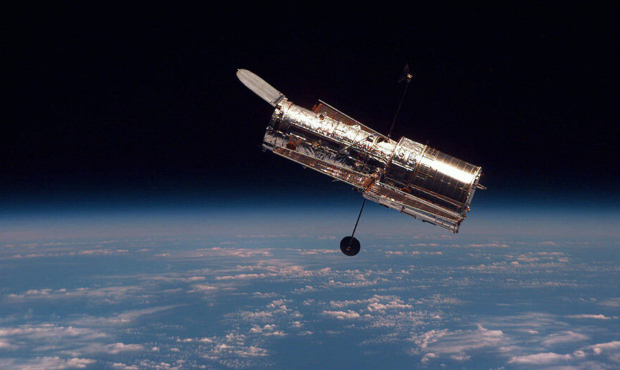Has the most distant object in space been detected?
Aug 25, 2021, 2:00 PM

Hubble Space Telescope (NASA File Photo)
(NASA File Photo)
Astronomers know that the universe is at least 13.5 billion years old. The “Big Bang” event, which many believe started the universe as we know it, is packed with trillions of galaxies and stars within each galaxy.
Many of the galaxies that have been discovered have measured distances of well over 10 billion light years, but a special galaxy exists which is listed as the most distant galaxy to date.
This galaxy is known as GN-z11, an object that is an incredible 13.4 billion light years from Earth.
That is at the back door of creation and one that tops the charts when it comes to galaxies.
But what about the most distant individual star in the universe? That is a very tough question to answer — until now.
Astronomers at the University of California-Berkeley have detected a star which they believe is some 9 billion light years from Earth.
This new star discovery — MACS J1149 Lensed Star 1, aka Icarus — is a most amazing find indeed.
The star was discovered with a long exposure image taken by the Hubble Space Telescope and was detected during a special sky survey.
The star discovery is actually the result of a special phenomenon in astronomy known as gravitational lensing. This is what happens when the light of an object in space is bent by the larger gravitational forces of another object in the same line of sight.
This is like having a large magnifying glass in front of an already distant object in space. The keen eyes of the Hubble Space Telescope helped astronomers to detect this most distant star. The newly discovered star is a blue super giant star.
The more you search the night sky, the more amazing the results become.
The Hubble Space Telescope conducted an experiment back in 1995 known as the Hubble Deep Field.
The purpose of this project was to take a series of images of a very small area of the night sky, only some 24 millionth of the entire sky, over a series of nights and see what lurks in a region of the sky, which seemed to lack many stars and galaxies.
The results surprised even the most educated scientists, as the image revealed well over 3,000 stars and galaxies in the images.
So, as you look to the night sky, know that even the darkest regions of the night sky contain many more amazing objects lurking behind the limits of our human eyes.
Finally, astronomers tell us that they have detected a possible planet in the Andromeda Galaxy, some 2.4 million light years distant. The object, SWEEPS-11, may be a planet lurking inside this amazing galaxy, making it the most distant planet known to date.
The discoveries just keep on coming!
Here is a listing of the most distant objects in the known universe.
Here are details on the most distant galaxy, GN-z11.
Here is an image of just how far GN-z11 is from the sun.
To print your own monthly star chart, click here.
To view satellites/dates/times of passage, click here.
Listen to the Dr. Sky Show on KTAR News 92.3 FM every Saturday at 3 a.m.
Podcasts are available here.








